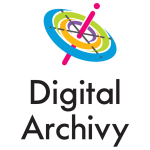Greatest Digital Archiving Challenge of All
The greatest digital archiving challenge of all is documenting change and continuity over time. We refer to it as Cloud Control.
As archiving technologies change, people and processes are modified. An institution continues to create, manage and archive its materials. But whether it’s intellectual property, content, communications, or anything else, digital assets and electronic records help document continuity and change over time.
Many institutions focus attention towards current, near-term or ongoing projects throughout the year. With good reason! They make deliverables or deliver results. Whether assets are stored on a shared drive or on a centralized system, they gain enduring value. Assets serve a function whether they serve one or more users. You must manage information actively to manage it effectively. Greater awareness and better arrangement and description improves search and navigation.
Documenting Change and Continuity Over Time
Documenting change and continuity can be synchronic (point-in-time) or diachronic (over-time). The notion that IP exists at any point in time, and not just as a post-hoc arrangement, posits that the role of the archivist is key. S/he could exist as part of an integrated records continuum and a holistic information ecosystem approach. This model is based on authority and context control of the content. Appraisal provides authority control when focused on function or provenance (creator). Arrangement and description captures relevant metadata. This will improve physical and intellectual control. A comprehensive understanding of ownership, usage, users, and chain-of-custody rules are critical. They lay the foundation for an effective digital archiving system that provides authority, accountability, transparency, and builds trust.
Documenting change and continuity simultaneously is critical. Interpreting materials may change over time, but active and effective content management helps quantify and protect content. Cloud control analysis identifies patterns and helps set priorities related to content that can be optimized.
To learn more or to discuss your situation, contact us!
Read More“We put the Knowledge in Technology”
One of the most complicated elements in content management derives from the fact that each archive’s collection is different. This is due to the scale, scope, variety, and complexity of the archival collections. It also arises from the fact that there are a variety of contributing factors and specialized requirements. By leveraging our critical thinking and awareness of other successful archival systems, we put our professional knowledge into technology.
Regardless of the size and scope of a project, there are three key elements that require serious review and analysis. In fact, all archival solutions and best practice are influenced by three factors: People, Process and Technology. If you think of it like a Venn diagram, you’ll understand why we believe “Content lies at the intersection of people, process and technology.”
Professional archivists know that an awareness and understanding of archival standards helps define the deliverables and set reasonable goals. By focusing on the relevant elements and contingencies, archivists can help build a trusted digital archive that serves a variety of users and their needs. Solutions based on archival standards help connect relevant content to the specialized interests of its users.
Content Management and Archival Standards
The key component, obviously, is the content itself. As a result, it is critically important to observe people and analyze their processes carefully and non-judgmentally. Knowledge of archival standards, technical requirements and workflows make it easy to use the technology in ways that address the goals and objectives. More importantly, familiarity with other systems helps identify a Designated Community of stakeholders and super-users. This knowledge helps ensure that the technology used in the information ecosystem will deliver results that make assets accessible to the right people in the right format at the right time.
An information ecosystem is created by and dependent on its users, the software and the procedures. A clear understanding of goals and objectives allow archivists to leverage Technology, People and Processes in a way that sets up the institutional archive for success. A successful content management system is effective and efficient, and remains flexible enough for future growth and change. This creates a winning User Experience that ensures the archive is both useful and user-friendly.
Read More


